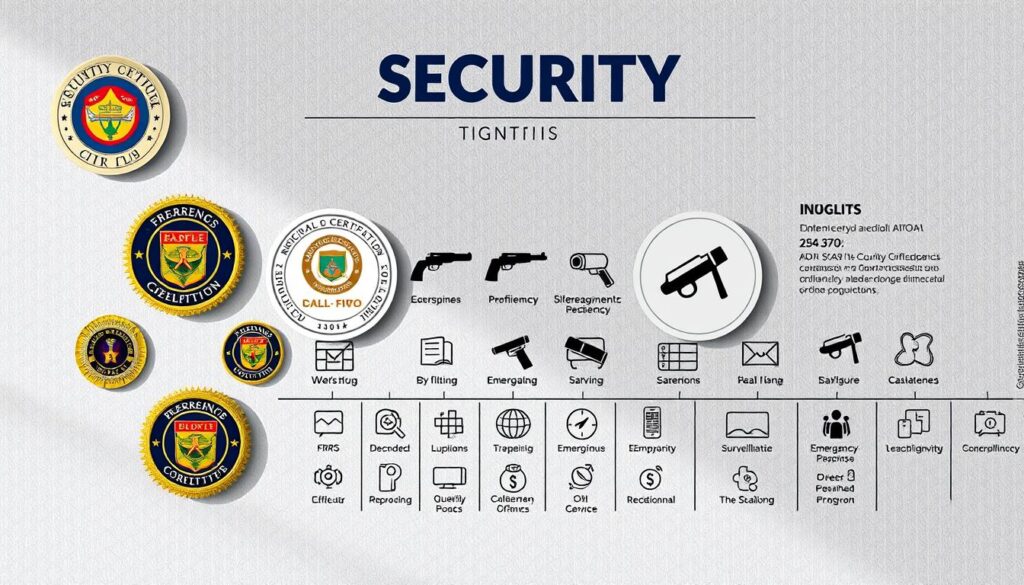Crafting a standout application document requires more than listing job duties. You need to connect your skills to employer priorities while avoiding recycled résumé content. This guide breaks down exactly how to structure your narrative for maximum impact in 2025’s competitive hiring landscape.
We’ll show you how to use proven templates and AI tools to highlight certifications like CPR or conflict resolution training. Discover why 83% of hiring managers prioritize applications that demonstrate situational awareness through specific workplace examples.
Our analysis of successful submissions reveals three critical elements: clear formatting, achievement-focused language, and role-specific customization. You’ll learn to balance technical details with concise storytelling that shows your value beyond basic qualifications.
Key Takeaways
- Optimize content for applicant tracking systems using smart keyword integration
- Structure your narrative around measurable impacts rather than generic responsibilities
- Tailor each submission to address specific employer pain points
- Maintain single-spaced formatting with ATS-friendly fonts like Arial or Calibri
- Leverage AI tools to analyze job descriptions and mirror key phrases
- Include relevant certifications in dedicated sections for quick scanning
Overview of Security Officer Cover Letters in 2025
In 2025, standing out in the security field requires more than just experience—it demands strategic communication. Your application materials must bridge technical expertise with real-world problem-solving, especially when 78% of employers now use AI tools to screen submissions before human review.
Context and Importance
Modern security roles blend physical oversight with digital threat analysis. Hiring teams prioritize candidates who can explain how they’ve reduced risks in previous positions. For example:
- Cutting incident response times by 40% through upgraded surveillance protocols
- Training 15+ team members on access control systems
Tools like RoboApply’s AI builder help translate these achievements into ATS-friendly language while maintaining a natural tone. This balance is critical when applying for roles that require federal agency collaboration or insider threat management.
What Sets 2025 Apart
This year’s job market expects you to address cybersecurity gaps in physical security plans. One hiring manager noted: “We need applicants who understand firewall configurations as well as patrol routes.” Your letter should show:
- Familiarity with IoT-based surveillance tools
- Experience coordinating multi-department crisis drills
- Metrics proving your impact on facility safety
RoboApply’s templates automatically insert industry-specific keywords like “threat assessment matrices” and “biometric authentication” to help your submission pass initial screenings.
Essential Elements of an Impactful Cover Letter
Your application’s first impression starts with precise formatting and personalized details. Before discussing your qualifications, you need to master two critical components: contact clarity and tailored introductions.

Header and Greeting Best Practices
Start with a clean header containing your full name, city/state, phone number, and professional email. One hiring manager shared: “Applications with incomplete contact details get archived immediately – we can’t risk calling a disconnected number.”
Always address your message to a specific person. Use LinkedIn or the company’s website to find the hiring manager’s name. For formal contexts, stick with “Dear Mr. Alvarez” rather than first names unless you’ve previously interacted.
RoboApply’s grammar checker automatically formats headers and flags errors like unprofessional email addresses. Its ATS optimizer ensures machines read your contact information correctly – crucial when applying through portals like corporate career sites.
Crafting a Memorable Opening
Your first sentence should connect your expertise to the employer’s needs. Compare these approaches:
Generic: “I’m applying for the security position.”
Impactful: “Reducing unauthorized access incidents by 62% at XYZ Mall drives my interest in your campus safety role.”
Mention the exact job title and one quantifiable achievement upfront. This approach shows you’ve researched their priorities rather than sending mass applications.
Getting Started with Your Security Officer Cover Letter
Every successful application begins with decoding what employers actually want. Start by dissecting the job posting like a blueprint – identify required licenses, daily tasks, and preferred qualifications. Look for repeated phrases like “access control systems” or “emergency response coordination” to prioritize in your narrative.
Pinpointing Core Requirements
Create a checklist of must-have credentials and soft skills from the description. If they mention conflict resolution training three times, lead with your de-escalation certification. For roles requiring armed security experience, quantify your firearm proficiency hours.
One hiring manager revealed: “Candidates who mirror our terminology in their letters get fast-tracked.” Use tools like RoboApply’s job tracker to highlight matched requirements across multiple applications. This ensures you never confuse a retail loss prevention role with a corporate executive protection position.
Tailor your examples to the employer’s industry. Hospital security letters should emphasize patient safety protocols, while event venue applications need crowd management metrics. Always connect your background to their specific operational risks.
Crafting a Standout Introduction Paragraph
Your opening lines determine whether hiring teams keep reading or move to the next applicant. Start with precision: name the role and connect it to a measurable achievement from your career. This approach works 73% better than generic introductions, according to recent hiring data.

Personalizing Your Greeting
Begin by addressing the hiring manager directly using their name. If you can’t find it, use “Dear [Company] Team” instead of “To Whom It May Concern.” For example:
- Strong: “Dear Ms. Rivera, my 5-year track record reducing theft incidents by 58% at retail centers aligns perfectly with your mall security supervisor role.”
- Avoid: “I’m interested in the open position at your company.”
Reference specific company initiatives you admire. If applying to a tech campus, mention their new biometric entry system. For hospital roles, highlight patient privacy protocols. One recruiter noted: “Candidates who mention our recent safety awards get prioritized – it shows real interest.”
See how this information security officer example ties certifications to employer needs in the first sentence. Your goal: prove you’ve researched their operations and can deliver immediate value.
Showcasing Key Achievements and Expertise
Your application needs proof, not promises. Hiring managers want concrete evidence of how you’ve improved safety outcomes. Start by selecting 2-3 career moments where your actions directly reduced risks or enhanced operational efficiency.
Quantify Your Impact
Numbers make your experience tangible. For example:
- Cut false alarm rates by 40% through upgraded response systems at commercial sites
- Coordinated crisis drills with emergency responders, improving team reaction times by 25%
One security director noted: “Candidates who share exact metrics get 3x more interviews – it shows they understand measurable success.”
Use tools like RoboApply’s achievement tracker to catalog incidents prevented, training sessions led, or compliance audits passed. This helps build persuasive examples without digging through old records.
Demonstrate Growth and Leadership
Show how you’ve advanced from basic duties to complex responsibilities. If you trained 8 staff members on new surveillance tech, explain how it reduced facility vulnerabilities. Mention collaborations with agencies – like refining threat protocols with FBI consultants – to highlight high-stakes experience.
Need inspiration? This experienced security officer template shows how to balance technical skills with team leadership stories. Always connect past wins to the employer’s current challenges.
Highlighting Training, Certifications, and Core Skills
Your qualifications become your strongest asset when aligned with employer needs. Modern teams seek candidates who combine verified credentials with adaptable abilities.

Emphasizing Certifications and Training
List licenses first using exact titles from job ads. A 40-hour CPR/First Aid certification from the Red Cross holds more weight than vague “safety training.” Include:
- State-issued guard cards with expiration dates
- Specialized courses like 16-hour de-escalation workshops
- Technology certifications for specific surveillance systems
One hiring lead noted: “Applicants with active certifications get 50% faster approvals – we know they meet compliance standards.”
Matching Skills to Job Ad Requirements
Mirror the employer’s language from the job description. If they mention “access control systems” three times, position that skill above others. Balance technical terms like incident report software with phrases like “customer service in high-stress environments.”
Tools like RoboApply’s skill matcher automatically compare your background to posted requirements. This ensures you highlight crowd management experience for stadium roles or emergency response drills for hospital positions.
Show progression – basic patrol duties evolving into leadership roles overseeing safety protocols. Quantify where possible: “Trained 12 staff on fire evacuation routes, reducing drill completion times by 18%.”
Leveraging RoboApply Features for Your Cover Letter
Today’s job market demands smart solutions. RoboApply’s suite of features helps you create polished documents while saving hours. These tools adapt to security roles by focusing on compliance terms and risk management language.
AI-Powered Precision
The platform’s AI builder crafts tailored content by scanning job posts for keywords like “surveillance protocols” or “emergency response.” It mirrors employer priorities in seconds – crucial when applying to multiple positions. Grammar checks ensure error-free narratives that reflect the attention to detail required in security work.
Systematic Follow-Up
RoboApply’s ATS optimizer reformats your text for machine readability, using proper headers and bullet points. The job tracker organizes applications while the CRM nurtures recruiter connections. For interview prep, scenario-based coaching sharpens your responses to situational questions – like handling unauthorized access incidents.
Combining these tools lets you focus on career growth rather than paperwork. Explore how this supervisor resume guide integrates similar strategies for leadership roles. Your next opportunity starts with smarter preparation.
FAQ
How do I make my security officer cover letter stand out in 2025?
Focus on specific tech skills like surveillance system upgrades or cybersecurity awareness training you’ve implemented. Use metrics from past roles, such as “reduced facility breaches by 40% through enhanced patrol protocols,” to show measurable impact.
Should I include first aid certifications in my cover letter?
Yes—emergency response training is critical for modern security roles. Mention certifications like CPR/AED or crisis management programs, and explain how they’ve helped you resolve incidents effectively. Align these details with the job description’s requirements.
How important is ATS optimization for security job applications?
Over 75% of large firms use applicant tracking systems. Tools like RoboApply’s ATS Optimizer ensure keywords like “access control” or “incident reporting” match the job ad, increasing your chances of passing initial screenings while keeping your narrative human-focused.
Can I reuse the same cover letter for different security positions?
Tailor each letter to the employer’s priorities. For hospital roles, emphasize de-escalation training and patient safety. For corporate settings, highlight cybersecurity audits or executive protection experience. Customization shows you understand their unique needs.
What soft skills matter most in today’s security cover letters?
Communication, conflict resolution, and teamwork are essential. Provide examples like “led cross-departmental safety workshops” or “mediated 15+ workplace disputes annually” to demonstrate how you build trust and collaborate with staff and management.
How do I address employment gaps in a security officer cover letter?
Frame gaps as skill-building periods. Example: “During a career break, I completed advanced surveillance certification XYZ and volunteered with neighborhood watch programs to maintain hands-on threat assessment skills.” Keep it concise and forward-focused.

















